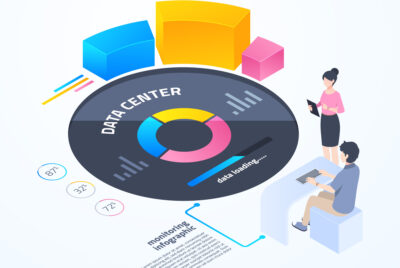When it comes to improving your website’s user experience and boosting your SEO, there are several areas that need to be carefully considered. By focusing on elements like segment overlap, user behavior, affinity categories, browser optimization, and insights, you can enhance your website’s performance and attract more visitors. In this article, we’ll explore six important concepts that can help you better optimize your site.
1. Segment Overlap: Understanding Your Audience
Segment overlap refers to the intersection of different audience groups that share similar characteristics. These segments could be based on various factors like demographics, interests, behaviors, or locations. By identifying overlapping segments, you can create more targeted and personalized content.
For example, if you’re running an eCommerce website selling fitness gear, you may have overlapping segments like “yoga enthusiasts” and “athletes.” By recognizing where these segments intersect, you can tailor your marketing efforts to better appeal to this combined group, potentially boosting engagement and sales.
2. Behavior: Understanding Bounce Rate
Bounce rate is often misunderstood. Many people associate bounce rate with the amount of time a user spends on a site, but the real meaning is rooted in action — or rather, inaction. A “bounce” occurs when a user visits a webpage and leaves without interacting with it (such as clicking on a link, scrolling, or completing a form). This metric is crucial for understanding how engaging your content is.
A high bounce rate doesn’t always mean that visitors are leaving quickly because the content is bad. It could also indicate that users found what they were looking for quickly (like a simple answer to a question) and left immediately after satisfying their query. The goal is to improve engagement, ensuring users stay on your site and explore more pages.
3. Affinity Category: Understanding User Interests
Affinity categories focus on users’ interests and their lifestyle choices. These categories are often used in advertising and marketing to group users based on shared affinities. For example, an individual who frequently browses fitness blogs or watches exercise videos might fall into an affinity category related to health and wellness.
By understanding your audience’s affinity categories, you can tailor your content to match their interests, creating a more personalized experience. Whether you’re using Google Ads or trying to optimize your blog posts, targeting affinity categories allows you to resonate more effectively with the users you want to reach.
4. Browser Optimization: Ensuring Chrome Compatibility
Browser optimization is an essential part of ensuring that your website performs well across all devices and browsers. While it’s crucial to ensure compatibility with multiple browsers, Google Chrome holds a dominant share of the market, and thus, making your site Chrome-friendly is a key consideration.
A Chrome-optimized site ensures that users experience smooth page load times, functional interactivity, and a visually appealing design. Some of the ways to achieve Chrome optimization include:
- Testing Cross-Browser Compatibility: Regularly testing your site on Chrome (as well as other browsers like Safari, Firefox, and Edge) will help you spot any display or functionality issues.
- Responsive Design: Ensure your site’s design automatically adjusts to different screen sizes, whether it’s a desktop, tablet, or smartphone.
- Speed Optimization: Chrome users expect fast loading times. Tools like Google’s PageSpeed Insights can help you identify areas to improve.
By optimizing your website for Chrome, you improve the overall user experience, ensuring that visitors from the most popular browser are satisfied.
5. Suggested Insights: Data-Driven Recommendations
Suggested insights are automated suggestions that come from data analytics tools. These insights are based on real-time user behavior and other metrics that provide actionable recommendations for improvement. For instance, tools like Google Analytics, Hotjar, and SEMrush analyze user data and suggest changes that could improve conversion rates, engagement, and traffic.
Suggested insights can help identify:
- Pages with high bounce rates.
- Areas where users are abandoning the website.
- Content gaps or opportunities for new blog posts.
By acting on these insights, you can refine your marketing and content strategies to better meet your audience’s needs and expectations.
6. Top 3 Benefits of Optimization
Optimizing your website for user experience and SEO offers several advantages. Here are the top three benefits of focusing on the key areas we’ve covered:
1. Improved User Experience
Optimizing your website based on behavior insights, affinity categories, and browser compatibility ensures that visitors can easily navigate and engage with your content. A positive user experience leads to longer site visits and better engagement, which in turn enhances your chances of converting visitors into customers.
2. Higher Search Engine Rankings
SEO optimization, from image compression to content structure and performance improvements, plays a critical role in improving your website’s visibility. A site that is optimized for user behavior and performance is more likely to rank higher in search results, attracting more organic traffic.
3. Increased Conversion Rates
When you focus on personalization through affinity categories and segment overlap, your content will resonate more with the audience. This targeted approach can increase conversion rates, whether it’s signing up for a newsletter, making a purchase, or downloading an eBook.
Conclusion
Optimization is an ongoing process, and by focusing on segment overlap, user behavior, affinity categories, browser compatibility, insights, and the core benefits of SEO, you can continuously improve your website’s performance. Whether you’re trying to increase engagement, improve SEO rankings, or boost conversions, each of these areas plays an essential role in achieving your goals.
With the right strategies in place, optimizing your website for users and search engines alike will lead to a smoother, faster, and more effective digital presence. Start making these adjustments today, and watch your website thrive!



